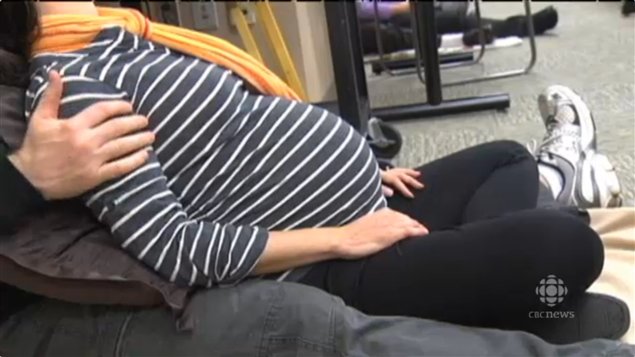Severe blood loss after giving birth is affecting a greater proportion of women in Canada and several industrialized countries, and researchers don’t really know why. Such hemorrhaging can required blood transfusions, uterus removal, or other procedures and, at worst, can be fatal.
The rate of postpartum hemorrhage increased by 22 per cent between 2003 to 2010, according to a study of more than two million deliveries in Canadian hospitals. Those requiring a blood transfusion increased 37 per cent.

‘A serious concern’
“It is a serious concern,” says Dr. Ellen Giesbrecht, head of obstetrics and gynecology at BC Women’s Hospital & Health Centre. “…It is the number one cause of an adverse event or complication for mothers in the developed world and especially in Canada.”
Excessive bleeding may occur depending on how the placenta is attached or if it does not detach properly after birth. It may also occur if the uterus does not contract sufficiently.
In a pregnant woman 30 per cent or more of the output from her heart is pumped to the placenta to feed the developing baby. “When she delivers and that placenta separates there is still potentially 30 per cent of her blood volume that is being pumped towards the uterus,” explains Giesbrecht. “If the uterus cannot contract down effectively after the placenta has delivered she can bleed a large amount and very quickly, if we don’t respond.”

‘Lazy uterus’ a major factor
This appears to be responsible for the higher rate of postpartum hemorrhage occurring in Canada and countries like the United States, Australia, Norway, Sweden, and Ireland. “There is an increase in what they call this atonic or that ‘lazy’ uterus that doesn’t contract down—that component of the postpartum hemorrhage that we cannot explain based on the known risk factors that we see.”
Practice drills speed intervention
Teams at Giesbrecht’s hospital and others in Canada participate in practice drills so they are better able to treat women who suffer heavy blood loss after delivery. They also work at identifying potential problems sooner so they can intervene before the situation become dangerous. Scientists continue to try to find out why more women are suffering postpartum hemorrhage.







For reasons beyond our control, and for an undetermined period of time, our comment section is now closed. However, our social networks remain open to your contributions.